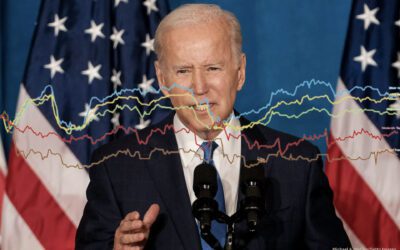This first Democracy Corps national survey of the New Year shows Republicans at risk at every level.[1]
On the ballot, Republicans are in serious danger. For the first time since the 2010 election, Democrats have taken the lead in the congressional vote and this poll shows that third-party defections on the Presidential ballot could prove devastating for the Republicans. The intensity gap has shifted in the Democrats’ favor and Democrats have moved closer to parity on the economy, reaching their highest level of trust since October 2010.
Voters are watching
More than half of all voters (53 percent) say that the more they watch the Republicans in Congress, the less they like what the Republicans have to offer; only 39 percent say they like it more – a 14 point margin. The country is equally repelled by the Republican presidential contest (53 to 38 percent). The style of their politics and governance is driving away independents. And more than half of white non-college voters who were key to Republicans wins in 2010[2] do not like what the Republicans in Congress are offering–”a staggering result.
Republicans in Congress lead race to the bottom
John Boehner and the Republicans in Congress are leading the crash.
- For the first time in two years, Democrats are winning the Congressional ballot (48 to 45 percent), the result of a major shift among independents. Democrats are now winning independents by 6 points – a net 13-point shift among independents since October and a net 23-point shift since August. In June, Democrats were losing independent men by a margin of 29 points. Democrats are now winning this demographic by two points. In 2010, Democrats lost seniors by a 23-point margin. That gap has closed to just 10 points.
- John Boehner’s favorability has fallen off significantly – 43 percent now give the Speaker a negative rating, with three in 10 voters giving him a very negative rating (under 25 on our 100-point scale).
- Two-thirds of all voters now say they disapprove of this Republican Congress, and its approval rating has hit a new low in our tracking – 25 percent. The decline has come from a complete drop-off of those who “strongly approve” of this Republican Congress – down to 8 percent, also the lowest in our tracking.
- The Republicans have lost their advantage on the economy. Democrats now trail Republicans on which party would do a better job on the economy by only two points, a net 5-point shift since October. While most improvements in this poll are due to Republicans faltering, here Democrats have gained 5 points on trust to handle the economy.
The Presidential Contest Full of Peril
The race for president remains very close, though showing the first signs of improvement for the president.
With his approval rating at 44 percent and vote at 48 percent, you have a close contest. But Obama’s strong support is up 4 points, has more winnable voters than Romney and has made some important recent gains with key swing groups. Obama is now winning 39 percent of white-non college voters, his highest total among that group in a year. Among independents, Obama now wins by two points – a net 10-point increase since October and an astonishing 18-point increase since August. Romney is not popular – only 30 percent of all voters, and only 26 percent of independents, give him a warm, favorable rating. Obama, on the other hand, remains personally popular, with nearly 50 percent giving him a warm, favorable rating. As a result, Mitt Romney has not been able to energize voters. Voters, especially Republicans, are ready to bolt to independent candidates in large numbers”–indeed, remarkable numbers. Our poll shows that as a third-party candidate, Ron Paul would take 19 percent of the vote in a matchup against Obama and Romney.
Almost all of this comes at Romney’s expense. Nearly tied in a head-to-head matchup against the President, Romney’s vote plummets when Paul is added to the ballot, losing 13 points of his vote share.
We also tested matchups between Obama, Romney, and three independent candidates: Ron Paul, Donald Trump, and Michael Bloomberg. Together, these three take 24 percent of the vote. While Romney’s support drops off in the face of a third-party challenge, Obama remains strong at 42 percent (10 points ahead of Romney). Thirty-two percent of Romney voters in the two-way matchup defect to one of the three independent candidates; only 12 percent of Obama voters defect. These independent candidates have traction in key subgroups – 30 percent of white non-college and 35 percent of suburban voters chose one of the three independent candidates in this 5-way matchup.
Intensity Gap
We have seen a major change on intensity. Obama and Romney have equal numbers of strong supporters – with strong support for the President up 4 points since October. Conversely, strong support for Romney among white non-college voters has decreased 5 points since October. Additionally, there is growing opposition to Republicans – strong disapproval of the Republican Congress is now 9 points higher than strong disapproval of President Obama.

[1] This memo is based on a national survey of 1000 likely 2012 voters conducted January 8-11, 2012 by Greenberg Quinlan Rosner Research for Democracy Corps. Unless otherwise noted, margin of error= +/- 3.1 percentage points at 95% confidence.
[2] White non-college voters made up 45 percent of the Republican vote in 2010. The Democracy Corps post-election poll found that 62 percent of white non-college voters voted for the Republican candidate in 2010.




